In which Rebecca picks berries to use as both subject and medium for her latest art project, and turns her fingers purple in the process.
Dear Reader,
Mum used to work at a pick-your-own fruit farm every summer. The soft fruit season would coincide with the Wimbledon tennis championship, and during that fortnight a black & white portable television set with an adjustable wire hoop of an aerial would be set up in the weighing shed. Having a telly at work – and turned on, no less – struck me as the height of luxury.
Our telly at home was seldom turned on during the day: heck, there were things to accomplish! We’d be outside doing things, and watching television was something which would happen for an hour before tea, or after we’d finished our homework, and only then if we’d chosen something specific which we wanted to watch. The box would never be on just for the sake of being on.
Tennis season, though, was different. We’d shut out the afternoon sun by closing the curtains, and put the telly on to watch McEnroe, Borg, Navratilova et al while the world at large carried on its doing-of-things outside. We wouldn’t be idle, though: in our curtained cocoon there’d be washing to fold, hankies and tea towels to iron, broad beans to pod and, being jam season, strawberries to hull.

Those strawberries were delicious. Mum’s favourite variety for jam was ‘Domanil’; deep, dark red fruits with an incomparable flavour, but we kids loved ‘Hapil’ the best, which although paler and with a more subtle flavour, grew to improbable and mouth-filling sizes. Their shapes too were extraordinary, as if the plants had been programmed to create an assortment of toy building blocks: knobbly cubes, trapezoid prisms, angles at, well, every angle.
Hulling, of course, was a task fraught with danger – to the fruit, that is. Every so often a strawberry or six would find its way into my mouth, and with practice I learned to time my compulsive crime against the jam yield to coincide with tie breaks or set points, when I knew that everyone else’s eyes would be on the screen.
(I have a hunch that the cumulative impact of my strawberry snaffling on our household jam production over the years was considerable.)
At work, of course with the tennis on in the background, Mum would make a point of beaming broadly to her customers at the weighing shed counter, and they would inevitably smile back. Although Mum never remarked out loud ‘Ha, caught you!’, those fruit-flesh-furnished guilt-grins were a dead giveaway that pickers had been snacking on the strawberries before they’d paid for them.
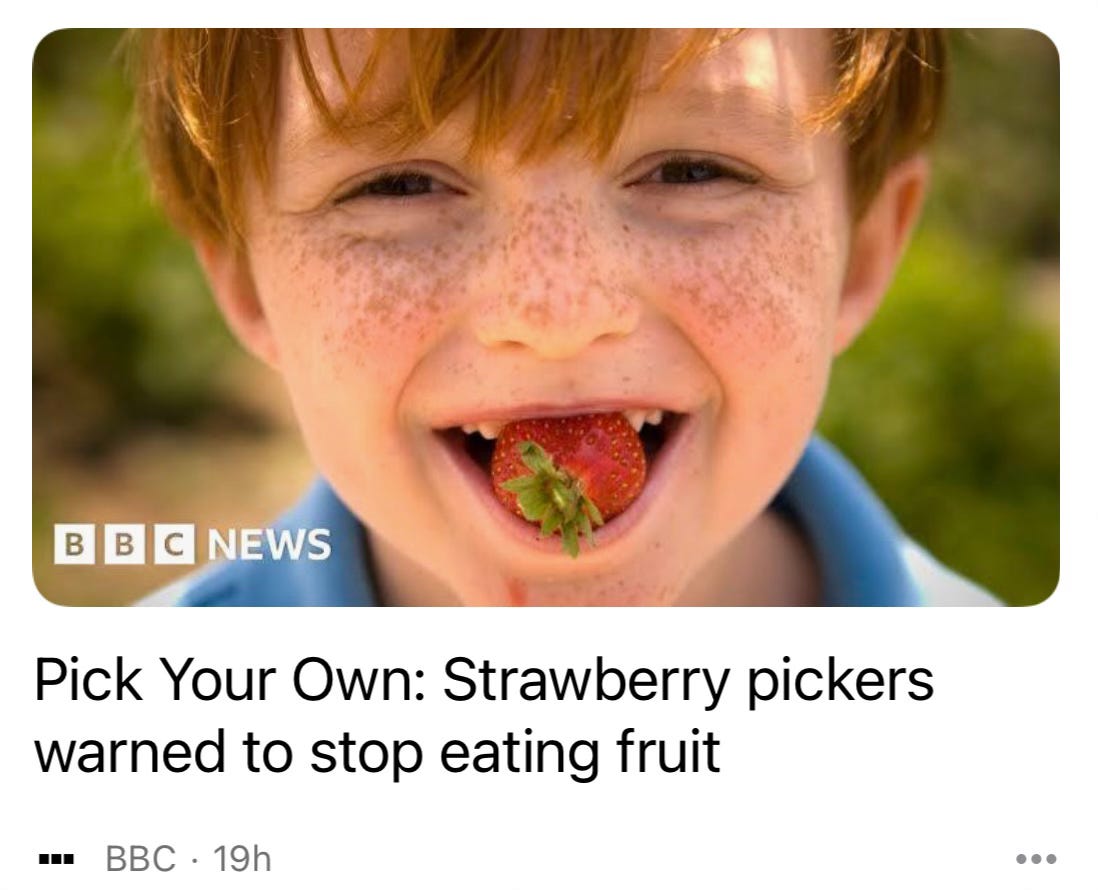
The farm offered a huge variety of fruit to pick, the most popular located in the rows nearest to the car park. Strawberries were the closest, and although very low to the ground – in German, in fact, they’re called Erdbeeren, or ‘ground berries’ – the red berries looked so pretty with their shiny bright fruits against the gold of the straw which provided a barrier between the soil and slugs. Taller – and therefore easier to get to – were the raspberries, whose pickers could get their hands on the goodies while standing.
A longer walk away were the crops which were less in demand: gooseberries, red-, black- and white currants and rhubarb – oh, so much rhubarb. Some fruit had exotic names: we loved the loganberries and tayberries, the latter sometimes as long as our fingers, deep, dark red and sweet as anything.
Mum would be at the fruit farm while we were at school, but my brother and I would go with her at weekends. The cardboard baskets for punters to pick into arrived stacked high and one inside the other, and their thin aluminium handles needed turning the other way up and fixing in place with a little cut-out lug on each side. This was a race, each of us trying to outdo the other with our respective piles of finished baskets while trying not to slice our fingers open on the sharp metal edges.
Next we’d populate the baskets with punnets made of clear plastic, the kind you see on supermarket shelves. They’d fit five in a basket, and each could hold around a pound of fruit, so a basket containing five punnets, each filled to the top, would be an easy 5lb estimate – useful both for a picker’s budget or their jam recipe. A basket without punnets and heaped to the brim and even higher in the middle would contain around 10lb of berries.
With this history I have never been a stranger to strawberries, but I was already a teenager before I’d met my first blueberry. That was in an American-style blueberry muffin, and given the impressive juice-bursting deep purple colour of its untidy polka dots I’d been expecting a much stronger flavour than the subtle one I encountered.

Back then blueberries, which are native to North America, were pretty hard to find over here. In fact, until relatively recently any blueberries that were sold came from overseas. Even today, they’ve been in commercial cultivation here in the UK for less than 70 years.
The man we have to thank for the advent of this delicious and versatile fruit in Britain is David Trehane, a Dorset-based market gardener and nurseryman who was the first, and until recently the only, British fruit grower to see the English potential in what was widely regarded as a North American fruit.
In 1949 he was one of six British growers who took up a trial offer from the University of British Columbia in Canada, of 80 free blueberry plants to any grower who cared to try them out. Only Mr Trehane persisted, setting up the first commercial plantation of English blueberries in 1957.
Blueberries are now readily found on the shelves and in the freezers of UK supermarkets, but I was surprised to learn from this article published on the Farming UK website in 2019 that the entire yield of the fruit from UK production in 2008 had been ‘a mere 281 tonnes’.

In August 2024, leading supermarket Tesco reported on its website that ‘based on recent demand UK shoppers are set to buy around 57,000 tonnes of the fruit this year… at the moment British growers can only supply 6,000 tonnes with the rest made up from imports.’
At the end of July we took a trip to Dorset for a family get-together, and we gathered that a plan was afoot to go fruit picking. Hang on, though: Wimbledon was over, and maincrop strawberries getting to the end of their season. 🤔
All became clear on our last morning, when we woke up to this news on the family iMessage thread:
‘Today we’re picking BLUEBERRIES!’
Reader, guess where?
That’s right – at none other than Trehane Farm – ‘The Home of British Blueberries’, where David Trehane had planted those first 80 plants from British Columbia.
The rest of the family had arrived before us, and we could see their sunhats bobbing up and down in a row marked ‘Berkeley’ as they concentrated on picking. We called at the weighing station to collect a single punnet – made of cardboard, not plastic like the ones at the fruit farm of my childhood – and went to join the others. They were really going for it, with many of their numerous containers already filled and even labelled with names of the different varieties they’d chosen.
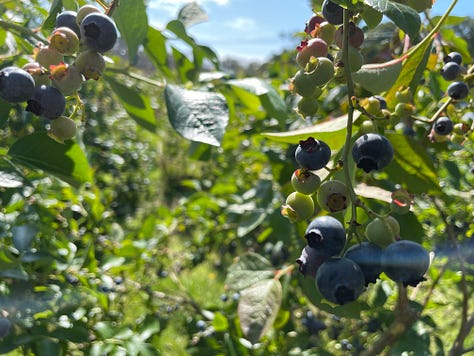
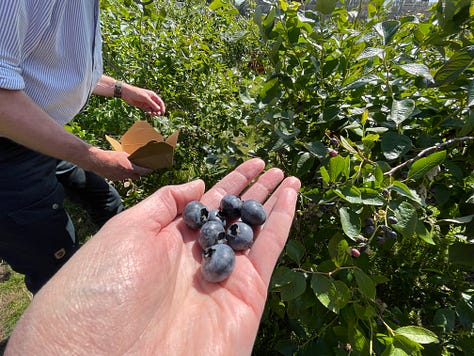
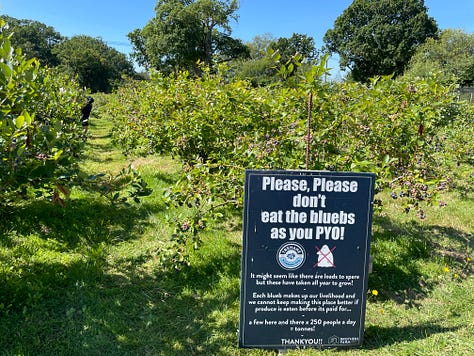
Jim and I plumped to pick just one variety, and chose the first we came across. The Berkeley blueberries were large and beautifully ripe, and soon our punnet was full. Having resisted considerable temptation to sample any – because like most law-abiding citizens we prefer to buy our food before we eat it – we hurried to the weigh-in so at last we could sample our haul.
‘WOW!’
Reader, the first blueberries we’d ever picked for ourselves were delicious, and back at home we enjoyed them with homemade yoghurt. Jim feasted on blueberry porridge for a number of successive breakfasts.
Eventually I popped the last of them into the freezer, and a few days later, as I watched a few berries thaw on top of my yoghurt, I marvelled at how dark their juice was.
I dived back into the freezer and hauled out another handful. Trying not to turn everything around me a juicy purple, I piled the icy berries onto one of the canvas pages of my sketchbook1 and put the book into a patch of sunlight.

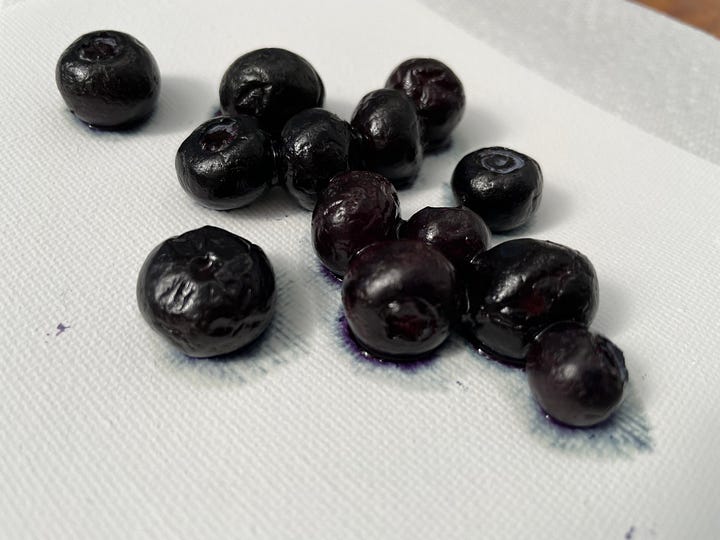
Removing the mess berries later, I was left with this:
I was thrilled that the beautiful star shape of the calyx of one berry had reproduced so beautifully, and that the puddles of juice had dried into such a shiny surface, almost like varnish.
Next I put the same berries – soggy and sorry-looking – onto a folded piece of white blotting paper, and left them there for a couple of hours. I’d expected the juice to soak all the way through, but it didn’t. There wasn’t enough of it, so I tipped the berries off and dampened the paper with cold water. Perhaps the juice would pull through to all the layers?
Hmmm, not really.
I started again, and although I was concerned that my supply of frozen berries was shrinking fast, I popped a new pile onto a pre-soaked piece of blotting paper.
I was interested that my initial ‘puddle print’ of blueberries on canvas gave me dark, cool purple, whereas the similar attempts with blotting paper resulted in a much pinker shade. I don’t know why that is: perhaps the difference in ingredients between the canvas and blotting paper is responsible, or maybe the added water had a colour-changing effect?
Reader, you know what I’m going to say next. Yup. I wondered if I could paint a picture of blueberries using blueberry juice.
I tipped the last handful of frozen blueberries into a basin and covered them with boiling water. The resulting ‘ink’ was much lighter than I’d anticipated, so I cheated and put the basin into the microwave for a minute.
The smell of hot berries was so delicious that it was all I could do not to grab a spoon and the tub of clotted cream I knew I had lurking in the fridge. I grudgingly left the basin and its contents to cool, and hunted down the water brush I knew was lurking in my cupboard of creation.
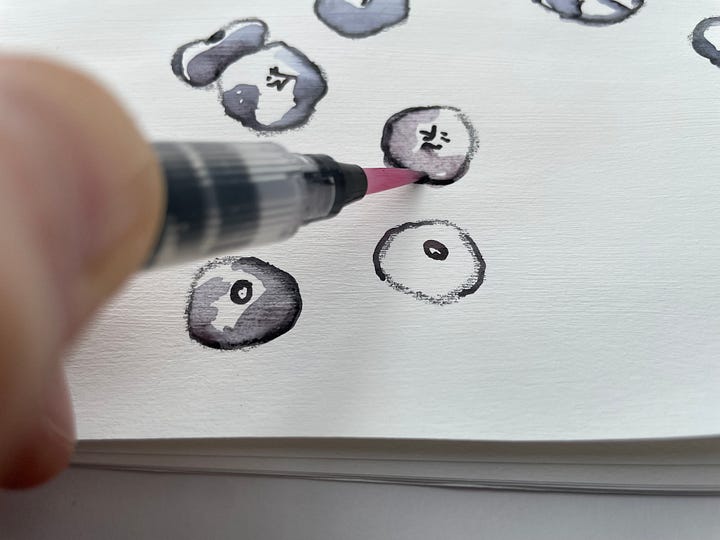
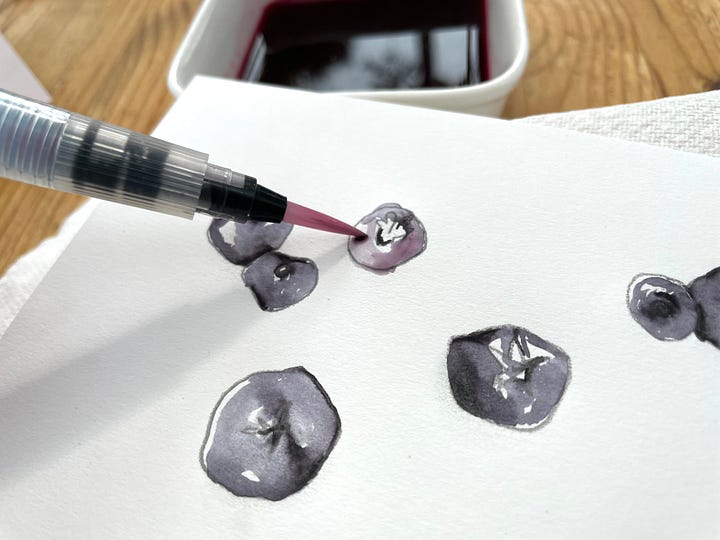
The fruit so unfamiliar to me as a child appeals far more to me now than when I’d first sampled it in that American-style muffin. This summer I’ve relished two juicy opportunities: to spend time in the sunshine picking blueberries with my family, and dyeing my fingers purple in messy, experimental art as I painted the berries with their own juice.
Nice things come in threes, though. What could I do with the few bluebs which remain? Well, there’s still some homemade yoghurt and that tub of clotted cream in the fridge – oh, and some strawberries, too.
😉
Love,
Rebecca
📚 Reading 📚
📚 My friend
from drew some scrumptious blueberries way back in April – I guess fruit comes into season sooner in the warmth of Austin, Texas! You can see them here:📚
of shows wild blueberries in all their glory in this post illustrated with her captivating photographs:📚 Regular readers of ‘Dear Reader, I’m Lost' will be no strangers to my ongoing light-hearted correspondence with fellow Brit
of . Terry illustrates his posts with his own art, too, and it’s my turn to reply to him next Wednesday!If you’ve enjoyed reading this post,please let me know by clicking the heart. Thank you! You’ll find all the posts in this ‘Art & Treasures’ series here.
Thank you for reading! If you enjoy ‘Dear Reader, I’m lost’, please share and subscribe for free.
I had written about this beautiful custom-made sketchbook with its pages in both canvas and drawing paper in this post:
157. Studies in scarlet
In which Rebecca opens her new sketchbook and dribbles it with strawberry juice.





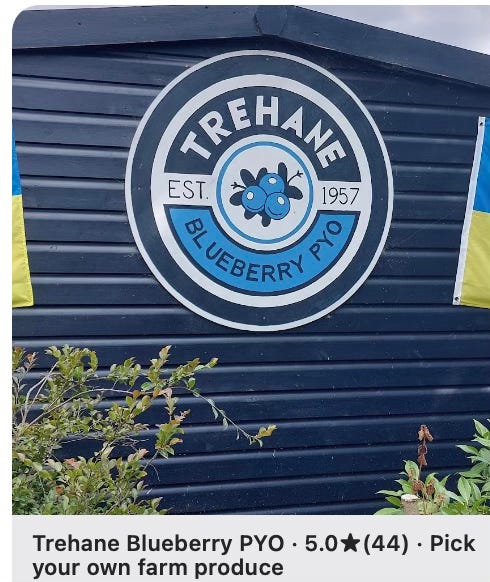

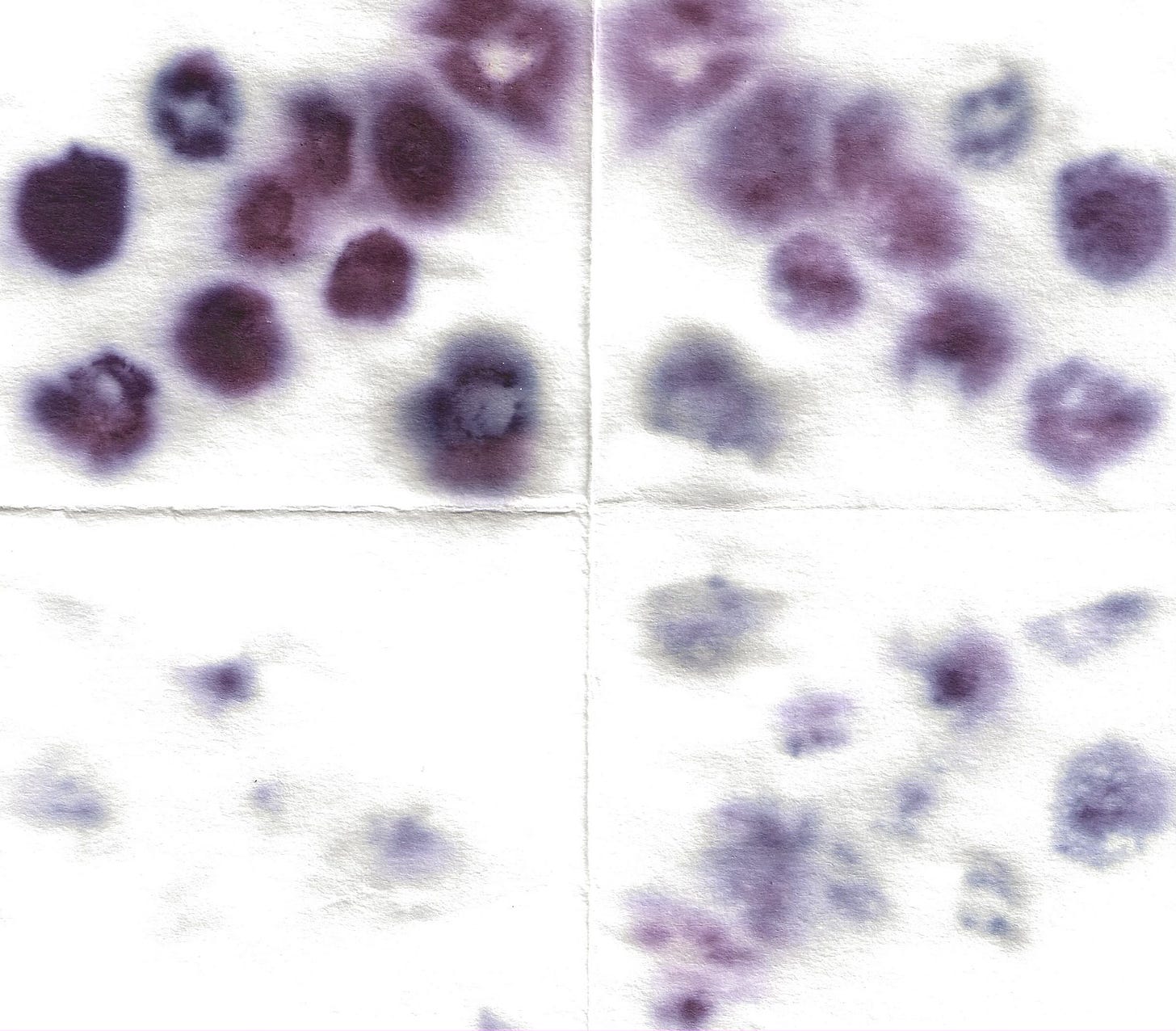
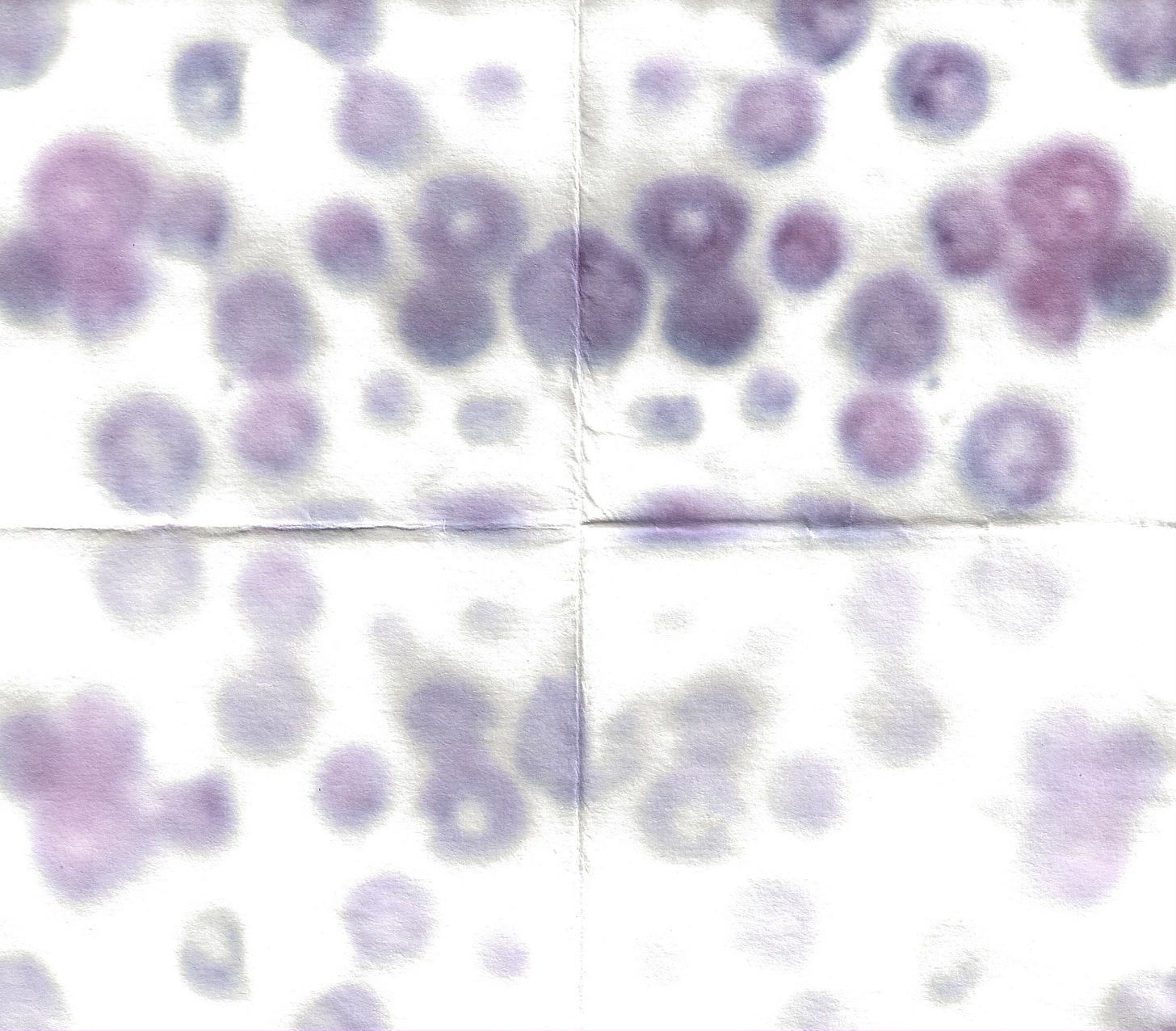





I love these essays about your fruit + art! Lovely stories, enchanting artwork, and your process tales. Mmmm, perhaps also because I love berries of all kinds but blueberries the most. I have yogurt and blueberries almost every morning (from frozen in the non-fresh season).
It was really interesting to see the various forms of imprinting the berries took. (I had written staining but that implies something we don't like). I love that you can weave so thoughtfully your stories of picking berries to eat with your efforts to USE the berries for art. Brilliant. What fruit is next? Figs? Pomegranate? Can't wait to hear!
Blueberries are grown near our rural property, but I’ve never picked or purchased them (not really fond of them.) We do have vast amounts of wild blackberry on our property though and got quite a few picked and frozen the last time I was there. I have great memories of picking them as a child, standing among the brambles with an old coffee can strung on a string around my neck and using a long pole with a nail at the end to pull a thorny branch toward me while plucking berries with my other hand.
There’s a lake near our other home and we’d swim across with a tub inside an old inner tube, and pick blackberries while standing waist high in the water with the carp gently nibbling at our toes. We’d swim back pushing the full tub of berries in front of us. Those berries were the very best, growing with their roots right down in the edge of the lake, they stayed much juicier than berries growing in dry soil.